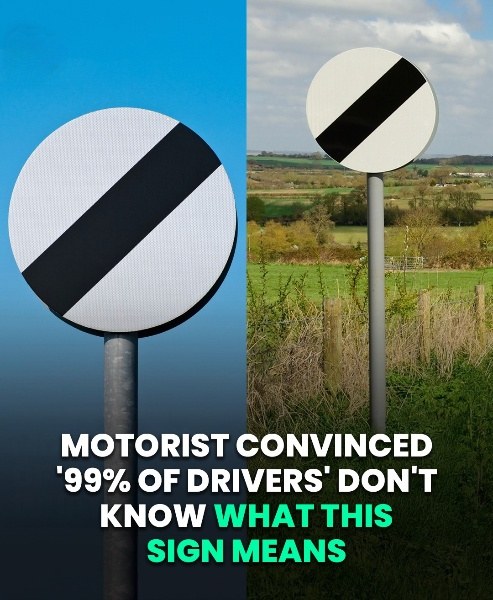You’ve probably seen it while driving in the UK: a plain white circular sign with a thick black diagonal stripe cutting across it. At first glance, it looks simple, even forgettable. Yet this ordinary sign has become one of the most misunderstood on British roads, sparking debates online as many drivers admit they can’t recall its meaning even after passing their theory test. The confusion has led to countless questions, lighthearted jokes, and even some unsafe assumptions.
The truth is, this sign signals the start of the national speed limit. From that point forward, the maximum speed depends not just on the road, but also on the type of vehicle being driven. For most cars, it means 60 mph on single carriageways and 70 mph on dual carriageways or motorways. For larger vehicles or those towing, the rules are stricter — 50 mph on single carriageways and 60 mph on dual carriageways or motorways.
Despite its simplicity, the sign is often mistaken for “no speed limit” or “drive as fast as you want.” Road safety experts warn that this misunderstanding can be dangerous. In towns or built-up areas with street lighting, the limit defaults to 30 mph unless another sign states otherwise. Weather conditions, traffic, and road quality should always guide how fast a driver goes, even when the national limit applies.
Organizations like the RAC stress the importance of refreshing driving knowledge, even for experienced motorists. A quick review of signs and regulations can prevent accidents and keep everyone safer on the roads. So next time you see that black diagonal stripe, you’ll know exactly what it means — and why understanding it matters more than you might think.
